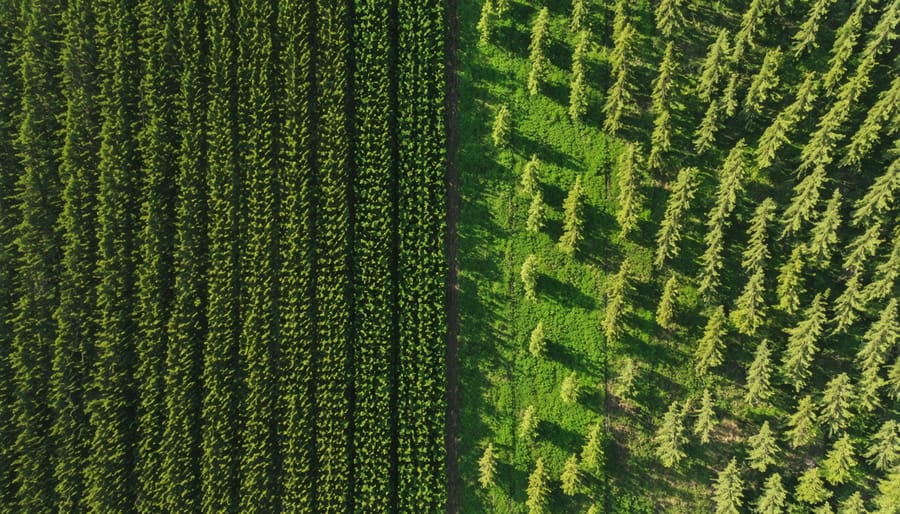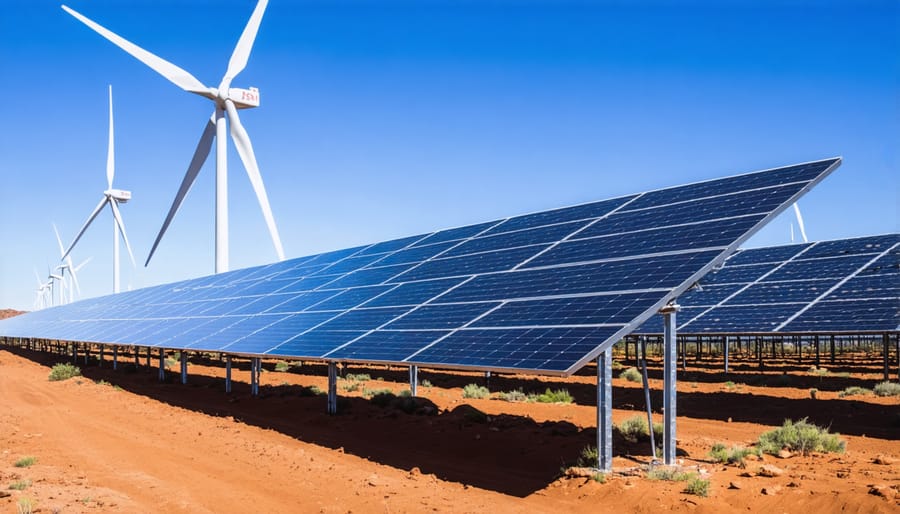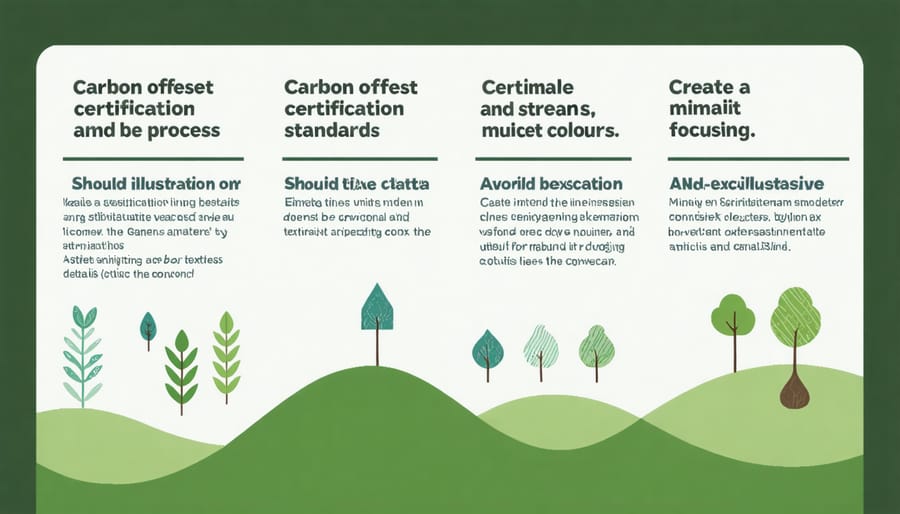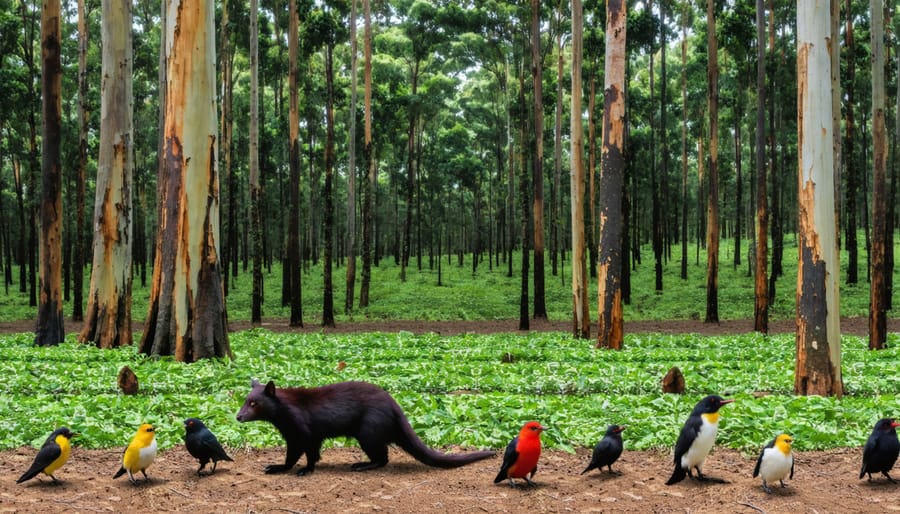Carbon offsets represent one of today’s most powerful tools for combating climate change, offering organizations and individuals concrete ways to neutralize their environmental impact while driving innovation in sustainable technologies. From protecting ancient forests in Tasmania to funding cutting-edge carbon capture facilities in Western Australia, these market-based mechanisms are transforming how we address our carbon footprint in measurable, verifiable ways.
The landscape of carbon offsetting has evolved dramatically over the past decade, with projects now spanning multiple categories and varying levels of permanence, additionality, and cost-effectiveness. Whether you’re a business leader seeking to achieve net-zero goals, an investor looking to diversify into environmental markets, or a policymaker crafting climate legislation, understanding the distinct types of carbon offsets is crucial for making informed decisions that deliver genuine environmental benefits.
While the global carbon offset market continues to grow exponentially, reaching $2 billion in 2021, the key to successful participation lies in recognizing which offset types align with specific sustainability objectives and how to evaluate their real-world impact. This comprehensive guide explores the major categories of carbon offsets available in Australia and internationally, providing practical insights for selecting and investing in high-quality offset projects.
Nature-Based Carbon Offset Solutions
Forestry and Reforestation Projects
Australia’s forestry and reforestation carbon offset projects represent some of the most effective ways to combat climate change while preserving our unique ecosystems. These initiatives combine modern conservation techniques with traditional land management practices to create sustainable carbon sinks across the continent.
The Great Southern Forest Initiative in Victoria showcases how strategic tree planting can transform degraded farmland into thriving carbon stores. Since its launch in 2018, the project has successfully planted over 2 million native trees, creating wildlife corridors while sequestering thousands of tonnes of CO2 annually.
In Tasmania, the Franklin Forest Protection Project demonstrates how preventing deforestation can generate valuable carbon credits. By preserving old-growth forests, these projects protect centuries-worth of stored carbon while maintaining crucial habitat for endangered species like the Tasmanian devil.
Urban forestry projects are gaining traction in major cities, with Melbourne’s Green Canopy Program leading the way. These initiatives not only offset carbon emissions but also provide additional benefits like reducing urban heat islands and improving air quality.
For businesses and individuals looking to invest in forestry offsets, Australia’s carbon credit system offers clear pathways for participation. Projects must meet strict verification standards and demonstrate additionality – proving that the carbon benefits wouldn’t have occurred without the project’s implementation. The average return on investment for forestry projects ranges from 8-12% annually, making them an attractive option for environmentally conscious investors.

Agricultural Carbon Sequestration
Agricultural carbon sequestration represents one of the most promising natural solutions for reducing atmospheric carbon dioxide. Australian farmers are leading the way by implementing innovative soil carbon storage techniques that transform their properties into effective carbon sinks while maintaining productive agricultural operations.
These practices include no-till farming, which minimizes soil disruption and helps retain organic matter, and the strategic use of cover crops that protect the soil while adding valuable nutrients. Farmers are also implementing rotational grazing systems, where livestock are moved between paddocks to allow grass recovery and promote deeper root growth, naturally sequestering more carbon.
The beauty of agricultural carbon sequestration lies in its dual benefits: while capturing carbon dioxide from the atmosphere, these practices also improve soil health, increase water retention, and boost crop yields. Many Australian farmers report stronger drought resilience and better produce quality after adopting these methods.
Local success stories include properties in the wheat belt that have doubled their soil carbon content within five years of implementing regenerative practices. These achievements demonstrate how agricultural carbon offsets can create a win-win situation, generating additional income through carbon credits while enhancing farm productivity and sustainability for future generations.
Renewable Energy Carbon Offsets
Bioenergy Projects
Bioenergy projects represent an innovative approach to carbon offsetting by converting organic waste into renewable energy while preventing greenhouse gas emissions. In Australia, these initiatives are gaining momentum, particularly in regional areas where agricultural and forestry waste is abundant.
One of the most successful examples is the transformation of sugarcane waste (bagasse) into electricity in Queensland’s sugar mills. These facilities not only power their operations but also feed excess renewable energy into the grid, creating a double benefit of waste reduction and clean energy generation.
Municipal waste-to-energy facilities are another growing sector in the carbon offset market. These projects capture methane from landfills and organic waste processing facilities, converting it into usable energy. The Woodlawn Bioreactor near Goulburn, NSW, exemplifies this approach, processing Sydney’s waste while generating enough electricity to power thousands of homes.
Agricultural waste digestion projects are emerging as promising offset generators. Dairy farms across Victoria and Tasmania are installing biodigesters that convert animal waste into biogas, reducing methane emissions while providing renewable energy and improved fertiliser for crops.
The beauty of bioenergy projects lies in their circular economy approach. They tackle multiple environmental challenges simultaneously: waste management, renewable energy generation, and carbon emission reduction. For businesses and investors, these projects often deliver additional revenue streams through energy sales and waste management services.
When evaluating bioenergy offset projects, look for those with proven technology, stable feedstock supply, and strong community support. The best projects demonstrate clear additionality – meaning they wouldn’t have happened without carbon offset funding – and provide measurable emission reductions alongside tangible local benefits.
Solar and Wind Power Investments
Investing in solar and wind power projects represents one of the most impactful ways to generate carbon offsets while supporting Australia’s renewable energy transition. These investments directly fund the development of clean energy infrastructure that displaces fossil fuel-based power generation, creating measurable and long-lasting emissions reductions.
Solar farms across sun-drenched regions like Queensland and South Australia are particularly attractive offset opportunities, offering predictable returns through both carbon credits and energy sales. For example, the Kidston Solar Project in North Queensland generates enough clean electricity to power 26,500 homes while offsetting approximately 120,000 tonnes of CO2 annually.
Wind power investments are equally promising, especially along Australia’s southern coastline where consistent wind patterns drive turbine efficiency. The MacArthur Wind Farm in Victoria showcases how these projects can deliver substantial offset volumes while supporting local communities through job creation and infrastructure development.
Businesses and individuals can participate in renewable energy offset programs through various mechanisms:
– Direct investment in utility-scale projects
– Purchase of renewable energy certificates (RECs)
– Community solar and wind initiatives
– Power purchase agreements (PPAs)
The verification process for renewable energy offsets is particularly robust, with clear methodologies for calculating emissions reductions based on energy generation data. This transparency makes solar and wind offsets highly credible in carbon markets.
Looking ahead, technological improvements and falling costs continue to enhance the attractiveness of renewable energy investments. Many projects now offer additional environmental benefits beyond carbon reduction, such as habitat preservation around solar farms and bird-safe wind turbine designs.

Industrial Carbon Offset Solutions
Energy Efficiency Projects
Energy efficiency projects represent one of the most practical and immediate ways to reduce carbon emissions while delivering tangible cost savings. These projects typically involve upgrading industrial equipment, optimising manufacturing processes, and implementing smart energy management systems across commercial and industrial facilities.
A standout example is the Victorian manufacturer who reduced their carbon footprint by 40% through modernising their production line with energy-efficient motors and installing heat recovery systems. This initiative not only generated carbon offsets but also slashed their energy bills by $200,000 annually.
Common energy efficiency projects include:
– LED lighting retrofits in commercial buildings
– Installation of variable speed drives in manufacturing
– Building management system upgrades
– Industrial process optimisation
– Waste heat recovery systems
– Smart metering and monitoring solutions
The beauty of these projects lies in their dual benefit: they generate verified carbon offsets while providing immediate operational savings. For instance, a Sydney-based cold storage facility implemented advanced insulation and smart controls, reducing their energy consumption by 35% and generating valuable carbon credits.
To qualify as carbon offsets, these projects must demonstrate additionality – proving that the efficiency improvements wouldn’t have occurred without carbon credit funding. They also require robust measurement and verification protocols to accurately quantify the emissions reductions achieved.
Carbon Capture Technologies
Carbon capture technologies represent an innovative frontier in Australia’s fight against climate change, offering promising solutions for reducing greenhouse gas emissions. These cutting-edge carbon capture innovations are transforming how industries approach emissions reduction.
Direct air capture (DAC) systems are leading the charge, using sophisticated filtration technology to extract CO2 directly from the atmosphere. These systems, while still emerging, show tremendous potential for scaling up carbon removal efforts across the continent. Several Australian companies are pioneering DAC installations in remote areas, where abundant renewable energy can power these operations sustainably.
Underground carbon storage, or geological sequestration, has gained significant traction in recent years. This method involves injecting captured CO2 into deep underground formations, where it remains permanently stored. The Gippsland Basin in Victoria exemplifies this approach, with its natural geological structures providing ideal conditions for long-term carbon storage.
Enhanced mineralisation techniques are also showing promise, particularly in mining regions where waste rock can be used to naturally absorb CO2. This process accelerates the natural weathering of minerals, effectively turning industrial by-products into carbon-storing assets.
These technological solutions complement traditional offset methods, offering a robust approach to emissions reduction. For businesses and investors, carbon capture technologies represent an opportunity to support cutting-edge climate solutions while potentially generating valuable carbon credits.
Choosing the Right Carbon Offset Investment
Verification and Certification Standards
To ensure the credibility and quality of carbon offsets, several respected verification and certification standards have emerged globally. The Gold Standard, established by WWF and other environmental organisations, is widely recognised as one of the most rigorous frameworks, requiring projects to demonstrate clear environmental and social benefits alongside carbon reductions.
The Verified Carbon Standard (VCS) is another prominent certification system, particularly popular in Australia, focusing on quantifiable emission reductions and transparent methodologies. Projects must undergo thorough third-party verification before receiving certification, with regular monitoring to maintain their status.
The Clean Development Mechanism (CDM), developed under the Kyoto Protocol, provides another layer of international verification, though it’s gradually being supplemented by newer standards. Australian Carbon Credit Units (ACCUs) represent our domestic standard, overseen by the Clean Energy Regulator, ensuring projects meet strict local requirements.
When evaluating carbon offsets, look for these certifications as markers of quality. The best projects typically feature multiple verifications, detailed documentation of their methodologies, and transparent reporting of their impacts. Regular auditing and public accessibility of project data are also positive indicators of credible carbon offset initiatives.

Cost-Benefit Analysis Framework
When evaluating carbon offset investments, a comprehensive cost-benefit analysis helps ensure maximum impact and value for money. Start by assessing the offset price per tonne of CO2, but remember that cheaper isn’t always better. Consider the project’s co-benefits, such as biodiversity preservation, job creation, or community development, which often justify higher costs.
Look for projects with strong verification standards and clear monitoring processes. Australian Carbon Credit Units (ACCUs) offer reliable local options, while international certificates can provide diverse opportunities. Calculate the total investment costs, including transaction fees and ongoing monitoring expenses.
Evaluate the project’s timeframe and permanence. Forest conservation projects might take longer to yield results but offer lasting benefits, while renewable energy projects often show immediate impact. Consider the risk factors, such as natural disasters or policy changes, that could affect the project’s success.
Remember to align the offset choice with your organisation’s sustainability goals and values. A balanced portfolio might include both nature-based and technological solutions to maximise environmental impact while managing investment risks.
Carbon offsets represent a powerful tool in our collective fight against climate change, offering diverse opportunities for individuals and organizations to make a meaningful impact. Throughout this exploration of carbon offset types, we’ve seen how natural solutions like forestry and regenerative agriculture work alongside innovative technological approaches such as renewable energy projects and methane capture systems.
The Australian carbon market presents unique opportunities, with projects that not only reduce emissions but also support local communities and enhance biodiversity. From supporting Indigenous land management practices to investing in cutting-edge clean energy technologies, there’s a carbon offset option to suit every goal and budget.
When choosing carbon offsets, remember to consider factors such as permanence, additionality, and verification standards. Quality matters more than quantity, and investing in properly certified offsets ensures your contribution genuinely benefits the environment.
Take action today by starting small – perhaps by offsetting your personal carbon footprint through local reforestation projects. Organizations can begin by analyzing their emissions and developing a comprehensive offset strategy that aligns with their sustainability goals. Every offset purchase, whether large or small, contributes to Australia’s transition toward a low-carbon future.
The time to act is now. By understanding and investing in carbon offsets, we’re not just compensating for emissions – we’re actively participating in building a more sustainable world for future generations.

